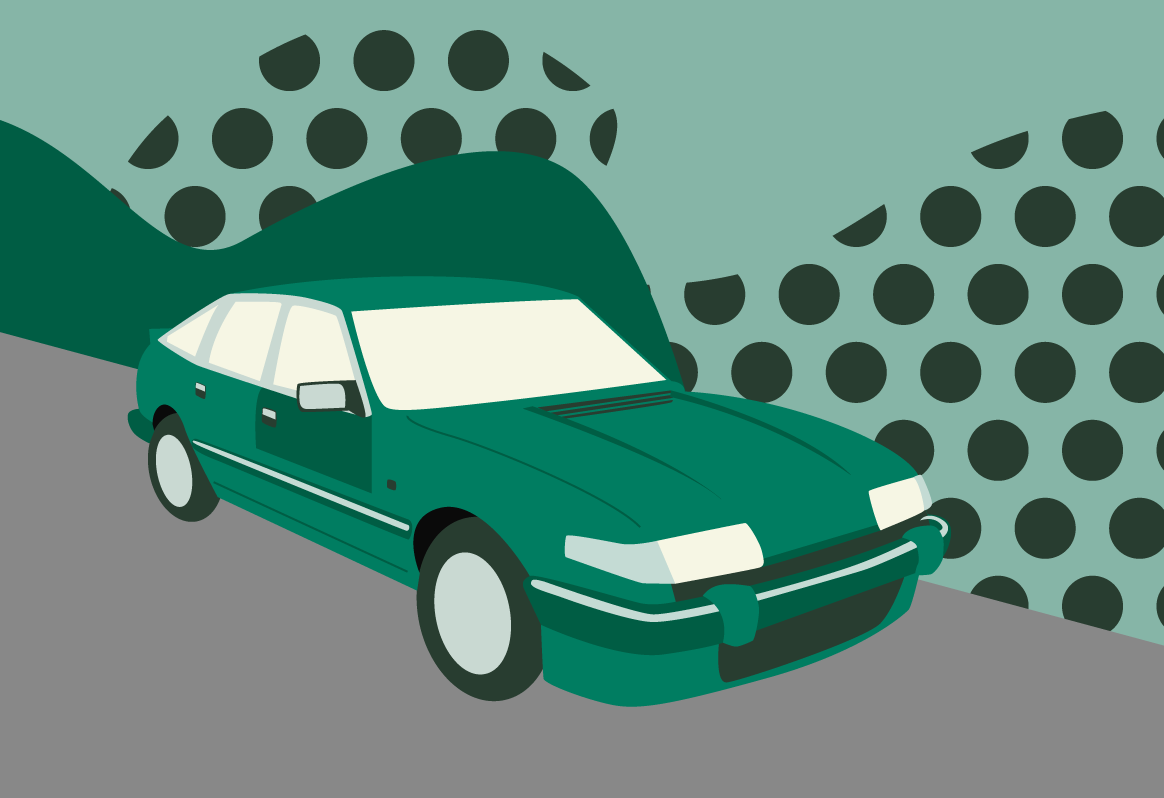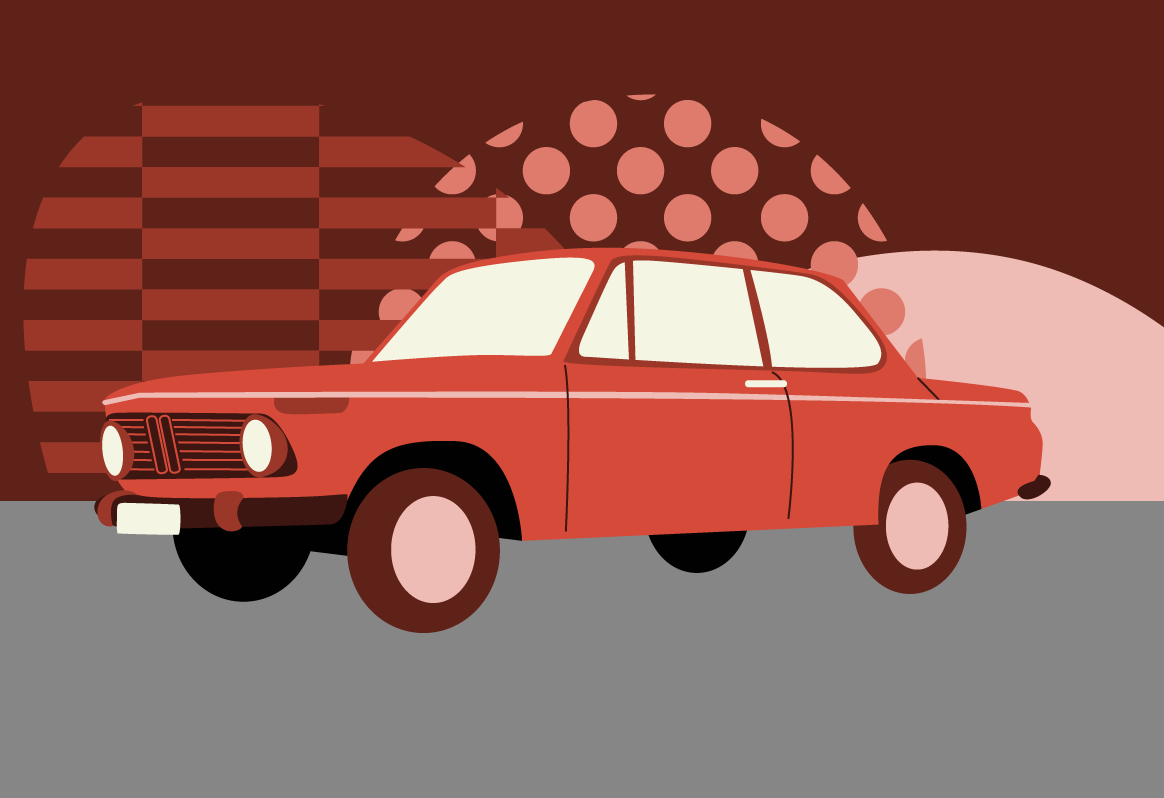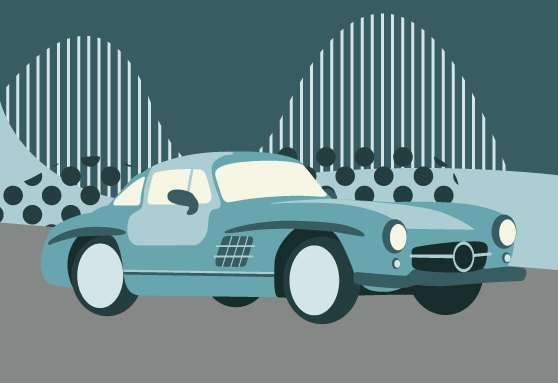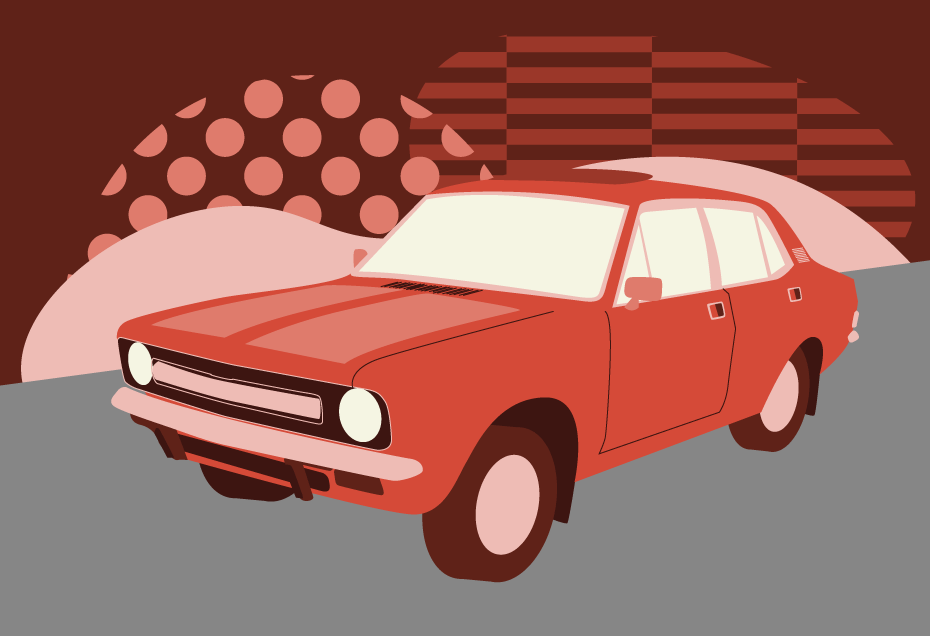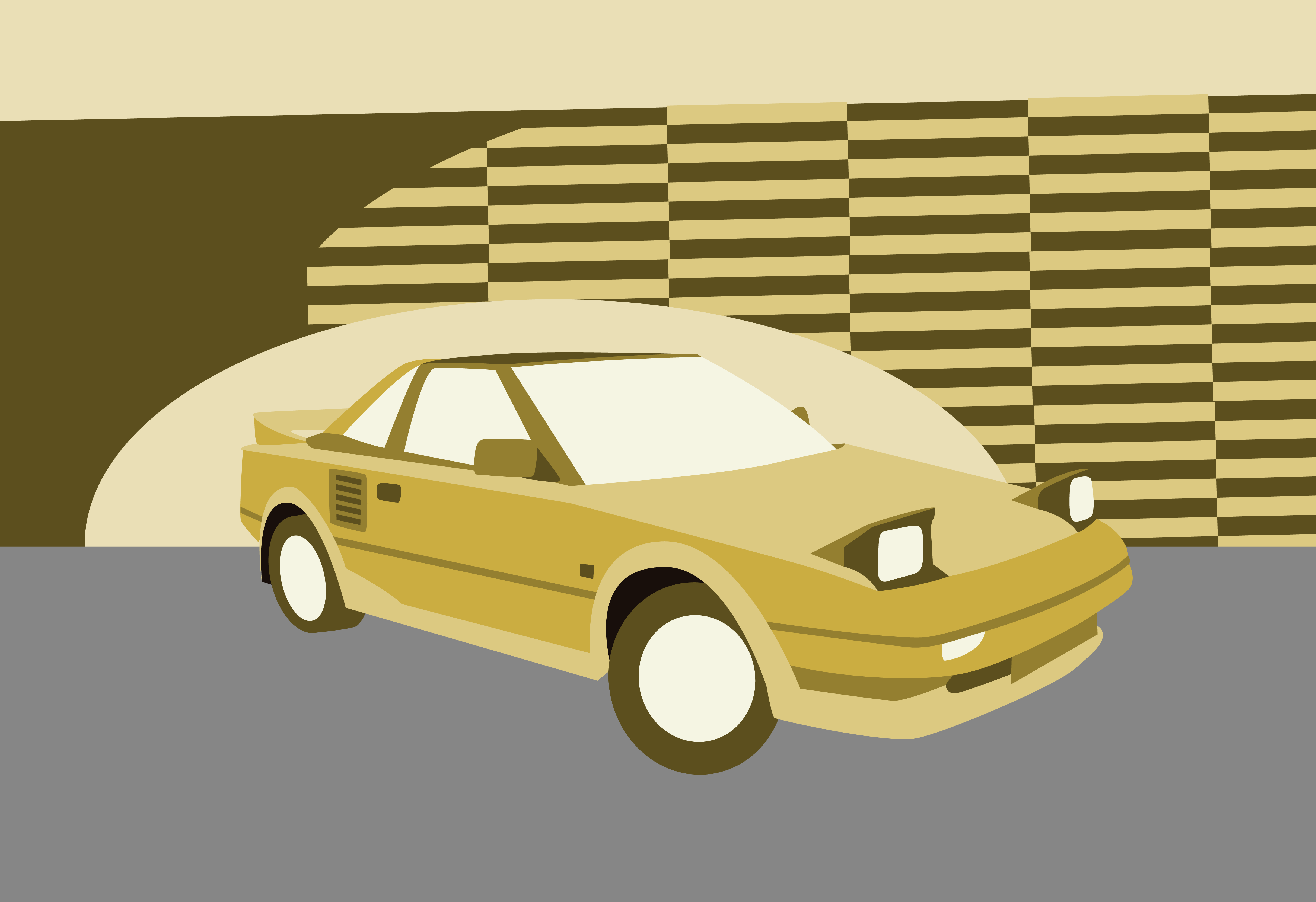It was the best of cars, it was the worst of cars…
It was the age of British Leyland, when industrial strife and poor build quality could bring down the best-laid plans of our finest designers and engineers.
The Rover SD1 was a triumph of supercar-esque styling, safety and speed, but flaking paint, poor reliability and assorted BL-related troubles dampened early enthusiasm – and overall sales numbers.
We chart its glorious, and troubled, life.
In the late 1960s, Rover and Triumph were both part of the British Leyland behemoth, and both had executive cars competing against each other – the P6 and 2000 respectively.
Ultimately, both needed to be replaced for the 1970s, and it made sense for BL to pitch just one car into the executive saloon market.
And thus the two separately managed parts of the BL empire were pitted against each other in a battle to come up with the British saloon of the future.
Rover v Triumph
Work on a P6 replacement, codenamed P10, began in earnest in 1970.
David Bache, who had styled the P5 and P6, was once again at the helm, and had his heart set on a hatchback design and a car that would break the mould from previous Rovers.

Over at Triumph, work had begun on a 2000 replacement as early as 1967 in the shape of the Michelotti-styled Puma, and it was this car that competed head-on with the P10 for the affections of BL bosses.

Both cars were shown to the BL Board at Solihull in February 1971, and it was the more forward-looking Rover that won the day over the conventional, three-box Triumph.
The Puma wasn’t entirely dead, its front suspension and transmission making it into what was renamed RT1 (Rover-Triumph number 1) to reflect a joint engineering project.
Both companies were soon pushed into BL’s Specialist Division, along with Jaguar, and the new car was again renamed: SD1.
Supercar styling
By July 1971, Bache had produced full-scale models of the SD1 design, one of which included an ambitious plan to incorporate gullwing doors – not surprisingly dropped on the grounds of cost.

BL bosses liked what they saw, and gave the project the green light before the styling work had been fully concluded.
When it was complete, it was clear that Bache had produced something of a masterpiece, with styling cues from the Ferrari 250LM and, especially, the Daytona.

This was a British saloon car with more than a hint of supercar about it.
The headlights and indicators are almost straight copies of the Daytona, as are the side swage lines.
Bache later described his hatchback vision to BL’s in-house newspaper: “The word ‘elegant’ describes the styling philosophy behind the new Rover.
“The problems were to provide a car which had impact and identity, good aerodynamics in all respects, low drag to assist quiet effortless high speed travel…a design generally acceptable and hopefully timeless.
‘All this had to be combined in a shape which would accommodate the increased space needs of people today, more living accommodation and more load carrying space, provided in such a manner that the balance could be adjusted to suit the requirements of any particular movement.
“This is a car close to my own heart, the concept I feel many other people, people who wanted a fifth door facility but who wouldn’t be seen dead in a shooting brake. The rest of the world has tended towards the same idea.”
An estate version never got beyond the prototype stage.
Designing the interior
The car’s aerodynamic, modern, shape was a departure from Rovers past, and the interior similarly broke the mould.
Gone was the wood and leather ambience, ditched in favour of soft-feel plastics, a more industrial, clean design, and an instrument binnacle placed on top of a symmetrical dash to make it cheaper and easier to switch from left to right hand drive.

Bache added features that we take for granted today, but were rare in the ‘70s, like a fully adjustable steering column, folding rear seats, plenty of storage areas, and internally adjustable door mirrors.
It was a break from tradition, and therefore a risk, but Bache wanted a car that was ahead of its time, not one harking back to past glories.
Engineering
Bache and Spen King had worked together on the P6, and the pair were reunited to bring the SD1 to market.
While the ex-Buick V8, as used in the P6, was a shoo-in for the new car, there were issues with the powerplant for the smaller-engined models.
The 2-litre engine used in the Rover P6 2000 was considered too unrefined to carry the SD1 into the 1980s, so work began on an entirely new engine based on the six-cylinder Triumph unit.
It became clear that this new engine would not be ready for the SD1’s 1976 launch, so the new car would launch in two phases: the V8 first, followed by the six-cylinder engines when they were ready.
The evergreen V8 was given an increase in power, from 143bhp at 5000rpm to 155bhp at 5250rpm, and maximum torque was delivered at 1950rpm as opposed to 2700rpm.
Like our illustration of the Rover SD1: the troubled life of a great car at the beginning of the article?
Download a free high-quality poster version here.
It was married to a new Triumph five-speed gearbox, later also used in the Jaguar XJ6 4.2.
The live rear axle suspension was seen by some as a retrograde step after the P6’s independent DeDion set up.
But King disagreed, considering the set up to be more stable in emergency situations, as well as simpler, cheaper, more reliable and easier to service.
Burmann power assisted steering, using much higher gearing than usual, went from lock to lock in just 2.7 turns, equivalent to Citroen’s DIRAVA system.
Building the new SD1
With Rover-Triumph officially merged in 1972, and a mood of optimism around the new car in the pipeline, the company secured funding from BL’s management to build a new factory on the Solihull site solely for SD1 production.
Permission was given to build a state-of-the-art facility on a 64-acre site next to the existing Rover plant, at a cost of £31m.

New Rover-Triumph boss Bernard Jackman promised an unremitting focus on quality, telling Motor magazine: “There was a tendency at one time for production and manufacturing considerations at Rover to override quality and things that we would stop going out now used to get out, but we have really clamped down on that over the past few years and stopped it.
“Quality and design are a completely integrated thing.”
Sadly, it wouldn’t always turn out that way.
Jackman was bullish about the post fuel crisis future, envisioning a doubling of car production to 470,000 Rover-Triumphs a year by 1978, and a roster of cars that amounted to a “pot of gold”.
However, Jackman was unceremoniously booted out after the Ryder Report brought in a new, more centralised Leyland Cars.
Launching the new Rover
The Rover SD1 (marketed as the 3500), was finally launched to rave reviews in the long, hot summer of 1976, priced below the Jaguar XJ6 to avoid interbrand Leyland competition.
Advertised as the car of “tomorrow, today”, the motoring press embraced the new British flagship’s styling, comfort and the strong performance from its V8 engine.

Motor Sport magazine’s Clive Richardson drove one of the first off the new production line, and positively raved about the car’s potential to “put the plug in the tidal flow of medium-to-large-size luxury cars poured in upon us, in ever-increasing volume, from Continental motor manufactories”.
He marvelled at a car of “thoroughly sporting demeanour and astonishing fuel frugality” that “offers a specification which no Continental manufacturer can match”.
And all for an “amazing” £4,750.
After just a few hundred yards of his 200-mile press launch journey, Richardson turned to his passenger, Motoring News’ Alan Henry and said: “This, Alan, is a proper motor car. I want one!”
He concluded: “Here at last is a British high performance luxury sports saloon to take the place of the much-loved Jaguar 3.8 of the early ’60s. I hope that Rover can supply what ought to be a fantastic demand and maintain the quality which the concept deserves.”
In terms of performance for pound notes, the SD1 put the frighteners on European competitors, either matching or outperforming the likes of the BMW 2500 and Mercedes 280SE for between £2,000 and £4,000 less.
A few months after Richardson had eulogised over the new Rover, Motor Sport’s editor Bill Boddy was keen to see what all the fuss was about.
While considering the styling “eye-catching rather than ‘executive’”, he admitted the “poor man’s Ferrari” look was “actually rather nice”.

With a 0-60mph time of around 8 seconds, and a top speed above 120mph, he found the Rover “a very fast, as well as an admirably effortless, motor car”.
“Overall, I can extend the very highest praise to the new Rover 3500, which should be welcomed as just the car Britain needs to stem the imports race. Good on you, Solihull, and Great Britain!”
Finally, CAR magazine presented a number of qualifying “ifs” to its first impressions.
“If the 3500 will be built in sufficient numbers, if the quality can be maintained along with the price, and if the ground is not cut from under its wheels by ill-advised legislation, the new 3500 should be one of the successes of the decade.”
And therein lay the Rover’s incoming problems.
Acclaim, awards and awkward truths
The new Rover earned pretty much universal early acclaim, and not just among the flag-wavers at home, winning the European Car of the Year awards in 1977, the first Leyland car to do so since the BMC 1800 in 1964.
But as the plaudits rolled in, trouble lay ahead.
With the V8 Rover priced to compete with four-cylinder rivals like the Audi 100 and Volvo 144, the orders flooded in, and production failed to keep up with initial demand.
Pre-registered cars were being sold for above list price, and Rover scrambled to increase production, with hundreds of new workers employed and others transferred to SD1 production from other areas of the business.
Adrian Flux Classic Car Insurance
Dealers were quoting a six-month waiting time for new orders, the company completely failing to capitalise on the rave reviews and awards.
As ever with BL, there was also a constant threat of industrial action, alluded to when CAR pitted the 3500 against a Citroen CX220 and a Renault R30TS in August 1976.
The magazine sought to damp down the triumphalism of earlier reports, noting that “so unqualified was the hymn of praise…that the proverbial reader from outer space would have gained the impression that the new Rover 3500 was the only car produced on Planet Earth”.
“It has many rivals, all longer established and from companies whose workers do not frequently activate their own self-destruct mechanism,” it said.
There was still plenty of praise here though, chiefly for the car’s performance and its lusty V8, but with a sting in the tail.
“Perhaps this is all academic anyway, since production (if it can be called that) has ground to a stop once more as this is being written, leaving Citroen, Renault, Peugeot, Mercedes, BMW, Opel and all the rest to count the money Rover should have had.”
More strikes, and quality issues
Production numbers continued to be damagingly low, at only 400 cars a week in early 1977, principally because of a failure to supply enough bodies.
As if this wasn’t bad enough, a two-week strike by delivery drivers left a stockpile of SD1s at Solihull, and a series of stoppages at the Castle Bromwich body plant saw production there grind to a complete halt.

Once it began again, a BL-wide toolmakers’ strike again hit production numbers just as the car was due to go on sale in Europe.
Efforts to ramp up production were thwarted after workers at Solihull rejected the introduction of a night shift, on the grounds that it caused health problems and disrupted family life, and production was again stopped in October 1977 by an axle assemblers’ strike.
Production was running at only 35 per cent of full capacity, and there were issues with the quality of bodies coming out of Castle Bromwich, which required attention once they had left the paint shop.
Morale in the factory was low, with complaints about new staff being rushed through training.
All of this, perhaps inevitably, led to quality issues with some of the new cars, and customers soon came forward complaining of electrical issues, flaking paintwork and shoddy finish and fit.
Management was under severe pressure to get cars out to dealers to alleviate the long waiting lists, and quantity won over quality, with some cars with known faults sent to dealers to, hopefully, sort out.
After the initial rave reviews, long-term tests by magazines showed up some of these quality issues, Autocar bemoaning a 3500 that let the rain in, badly-fitted doors, and an overall poor fit and finish.
And they were far from alone.
Launch of the 2300 and 2600
Amid all this industrial unrest, Rover launched the smaller-engined versions of the SD1, fitted with new six-cylinder units loosely based on the old Triumph unit.

The car finally replaced the P6 and Triumph 2000 series, and was well-received by the motoring press, Autocar noting in October 1977 that the 2600 was, at 136bhp, only 19bhp down on power from the V8, with an impressive top speed of 117mph.
Acceleration took a hit, with 60mph reached in 10.7 seconds, but this was still plenty fast enough compared with its rivals.
The magazine found the car to be “as good as we expected…and in many ways better”.
“It remains a pleasure to drive, the more so because it has found itself a rather sporting character which could not, surely, have been foreseen,” it wrote. “Its job will be to back up the 3500 and widen the appeal of the SD1 market: it is bound to succeed. All that is needed, as always, is the production and the quality control.”
Once again there were supply issues, and waiting lists. Once again, Rover lost out to manufacturers who could supply cars to customers when they wanted them.
The waiting lists weren’t just Rover’s fault: component suppliers struggled to keep up with the increase in production at Solihull, leading to partially-completed SD1s sitting around waiting for missing parts.
Enter the premium V8-S
In 1979, Rover added the V8-S to the range, a premium model with upmarket features like air conditioning, an electric sunroof, headlamp wash wipe, and alloy wheels.

There were also velvet seat covers, a deep shag pile carpet and a Radiomobile radio/cassette.
Autocar described it as “a long journey car par excellence offering superbly quiet and untiring cruising at speed”, while Motor went even further, calling it “the world’s best hatchback”.
The magazine was also impressed by the build quality, on the test car at least.
“If our test car was anything to go by, Rover have now achieved the standard of finish that the excellence of the basic design deserves,” it wrote.
“The car’s structure feels rattle-free, and it looks good with metallic paint and gold-painted alloy wheels. The shag pile carpet is positively luxurious, and velvety cloth trim is used extensively for the seat facings and door panels and headlining.”
CAR magazine, while praising the Rover’s “distinctive, mile-gobbling character, its comfort, its prestige and the rifle-bolt precision of its controls”, noted how its reputation had been “severely damaged by the adverse publicity about its reliability”.
Rover Triumph’s managing director Jeff Herbert played down the reliability and quality issues, claiming teething problems were always to be expected.
“When you consider that we had a brand new car being built in a brand new factory by a largely new workforce, you’re bound to experience some difficulties,” he told Motor in August 1979. “It’s only when you have hundreds of thousands of customer miles under your belt that you can find out what’s required and it’s the rate at which things are put right that distinguishes a good manufacturer from a bad one.
“We had no more problems than any other manufacturer introducing a totally new model. None of the problems we suffered were major reliability defects; they were just silly, niggling, customer irritating ones.
“On virtually any car, if you look hard enough, you can find something wrong. We are producing better, more reliable Rovers than ever before.”
Vanden Plas the new top dog
The V8-S was usurped as the flagship of the Rover range in 1980, with the arrival of the Vanden Plas.

It coincided with a downturn in the large car market, as buyers increasingly turned to smaller engines in the wake of a trebling in petrol prices.
The Vanden Plas was a bid to lure buyers who could afford the petrol bills associated with a V8, and boasted even greater luxury than the V8-S.
It came, as standard, with electrically-adjustable, heated door mirrors, cruise control, air conditioning and an electric sunroof, plus Dunlop Denovo tyres on alloy wheels, and a choice of velvet or Connolly leather upholstery.
Autocar said the Rover “remains a very strong competitor in its class”, coming out as the best all-rounder against the BMW 732i, Mercedes 280E, and Opel Senator.
Prices slashed
In the early days, production of the SD1 had failed to meet demand, but by 1980 there was a stockpile of up to 10,000 unsold cars.
By Spring, to try to reduce this and to help with cashflow, BL resorted to heavy discounting, and even closed the production line for four weeks during March and April.
Further industrial action followed at Solihull after disputes over new pay and conditions, and BL’s reputation continued to plummet.
Indeed, during a House of Commons debate about BL’s corporate plan in May 1980, Bromsgrove and Redditch MP Hilary Miller was moved to plead: “We must get out of the habit of regarding BL as a sick joke.”
Things didn’t improve, however, with a four-day week followed by 450 redundancies, and further strike action in January and April 1981.
The company was losing £1m a day, and BL chairman Michael Edwardes finally lost patience with Solihull, announcing that the factory built at such cost five years earlier would be closed with the loss of 2,000 jobs.
Production would be shifted to Cowley in 1982, with workers retrained from assembling the Maxi, which was dropped in July 1981.
The bodyshell, paint and assembly would now all be done on one site.
Like our illustration of the Rover SD1: the troubled life of a great car at the beginning of the article?
Download a free high-quality poster version here.
Facelift and improving quality
The first Cowley-built cars to appear were facelifted models for 1982, featuring mostly cosmetic changes on the outside and an interior redesign.
Externally, there was a deeper rear window to improve visibility and fitted with a rear wash-wipe, plastic wraparound bumpers and chrome-ringed, flush-fitting headlights.
A new, flatter and longer instrument panel with dials under a glass hood gave the interior a fresh look, while wood trim appeared for the first time on the SD1.
Also new for 1982 was an entry level four-cylinder, 2-litre version and the return of the Rover 2000 name.
CAR magazine noted in September of that year that BL had not yet achieved the sort of blanket market coverage they needed for survival – hence the need to snare a bigger slice of the lower end of the executive market.
The magazine tested the Rover against a Saab 900GLS and an Austin Ambassador HLS, which shared its O-series engine.
While acknowledging the Rover’s superiority as a drivers’ car, with sharp steering and fine handling, and its snob value, the Ambassador narrowly took first place (yes, really) for its “outstandingly supple suspension”.
The good news was that build quality and reliability finally began to improve, and a 2.4-litre diesel further widened buyer choice late in 1982.
The Italian VM engine was fitted with a KKK turbocharger and, while its 90bhp was nothing to shout about, it could reach 104mph and achieve 35mpg.
The downside was that it needed frequent oil changes, in some cases every 3,000 miles…
The mighty Vitesse
More than six years after the SD1 was launched, it finally came of age with the launch in October 1982 of the Vitesse, a higher performance version of the by-now legendary V8.

BL wanted a high-performance SD1 to act as a halo car, with its appeal theoretically trickling down to lesser variants.
Its seeds were sown with the change in Group 1 regulations for the 1980 British Saloon Car Championship, the forerunner of today’s BTCC, which raised the maximum engine capacity from 3-litres to 3.5-litres.
By 1981, Tom Walkinshaw Racing (TWR) had taken over the running of the works Rovers under contract to Austin Rover Group Motorsport, and things began to take off.
The Vitesse car was launched in October 1982 on the back of improving saloon car racing results which led to an increase in sales of the standard SD1s.
The time was ripe to translate this track success into an unashamedly sporting “executive express” to take aim at competition like the BMW M525i.
Initially called the Rapide, the name was changed to Vitesse (French for speed) after Aston Martin Lagonda refused to relinquish the trademark.
The highly tuneable Buick V8 was given Lucas L-Jetronic fuel injection, improved gas flow, a higher compression ratio, bigger bore exhaust, and recalibrated engine control unit, resulting in a hike in power from 155bhp to 190bhp.
On the outside the new car was given front and rear spoilers, lowered suspension, 15-inch multi-spoke alloys and Vitesse graphics.
Vitesse on the road
The Vitesse received positive reviews in the motoring press, with Motor hailing “the fastest-accelerating production saloon car”, capable of hitting 60mph in 7 seconds on its way to 135mph.
BL was praised for making positive capital out of the racing programme, translating the Rover’s new track-bred performance image into roadgoing reality.
“It’s an addition to the range of which we thoroughly approve,” it wrote. “We like it for what it is, an effective and entertaining sports saloon that we thoroughly enjoyed driving.
“We’re only sorry that it’s taken BL this long to get around to it.”
Autocar said the Vitesse had “a distinctly ‘animal’ character all of its own”, while CAR magazine said the car was “eye-wateringly quick and one of the finest long distance motorway cruisers ever to have come from this country”.
Although it came out second-best against a sharper-handling BMW 528i, the magazine said the Rover would appeal to “those who want that little extra performance, and seat of the pants thrill, and don’t mind sacrificing some refinement”.
“(They) will enjoy the Rover’s hairy chested 130mph road car. It proves there’s life yet in the idea of the old style big-engined British sports saloon.”
The Vitesse proved popular among the police, including the Metropolitan Police’s Royal Protection Squad, while Prince Edward and Princess Anne were spotted driving them.

Vitesse in motorsport
The Vitesse was hugely successful in motorsport in the UK and Europe, a works car driven by Steve Soper winning the 1983 British Saloon Car Championship before being controversially disqualified months later after protests from BMW driver Frank Sytner.
This Hepolite-sponsored car was tracked down by its engineer Ken Clarke, who bought it in 2011 and returned it to the racetrack six years later.

As a result of the disqualification ruling, which came after the start of the 1984 season, the works team withdrew from the BSCC and focused on competing in Europe.
Nevertheless, Andy Rouse won the 1984 drivers title in a semi-works Vitesse which continued to race, and the car continued to win plenty of races overseas.
It was also successful in rallying, with Tony Pond winning the Group A category of the 1985 British Rally Championship.
Rover took advantage of all this racing success with advertising slogans such as “We race, you win” and “Race bred for the fast lane”.
End of the road
With newer, more advanced competition coming along, and the Anglo-Japanese Rover-Hondas on the horizon, it was clear the SD1 was nearing the end of the road.
But Rover continued to introduce new variants, including the 1984 Vanden Plas EFi, featuring the 190bhp Vitesse engine with an auto box, Connolly leather and burr walnut facia and door capping.

Motor described “a prestige car with character – and one that offers more performance than anything at a cheaper level than the V12 Jaguar”.
“As a value-for-money executive express, it will be a hard act for Austin Rover to follow.”
The last of the line Vitesse was still competing with more advanced models like the BMW M525i and Citroen CX GTi Turbo and, while coming up short in many respects, there was still a lot of love for the Brit, as shown by CAR’s group test of April 1985.
“The Vitesse is still a surprisingly handsome old thing, and very nearly a match for the BMW,” it wrote. “The Rover, the big, stable, familiar old tank, packs real performance, even when measured against the best. They’ll be calling this a classic before we’re all too much older.”
Essentially, the SD1 was a great car let down by poor industrial relations, BL’s inability to meet early demand, and poor quality control that gave it a lifelong reputation for unreliability.
In total, 303,345 were built in 10 years before it was replaced by the Rover 800, but it could have been so much more.


